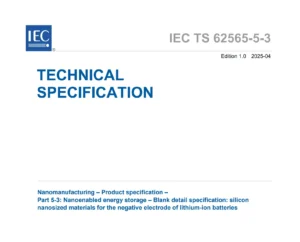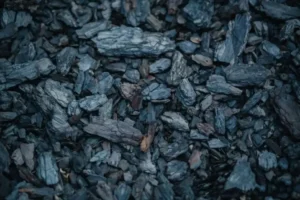Table of Contents
- Introduction
- What Are Activated Carbon Supercapacitors?
- Understanding Self-Discharge
- Key Causes of Self-Discharge
- Engineering Fixes and Mitigation Strategies
- Future Research Directions
- Conclusion
- FAQs
Introduction
Supercapacitors have emerged as powerful energy storage devices due to their rapid charge/discharge capabilities, high power density, and long lifecycle. Among various types, symmetric supercapacitors using activated carbon electrodes are particularly popular for their cost-effectiveness and robust performance. However, one persistent challenge affecting these devices is self-discharge – a natural process where stored energy is lost over time, even when no load is connected.
What Are Activated Carbon Supercapacitors?
Activated carbon supercapacitors are electrochemical capacitors that use activated carbon as electrode material in a symmetric configuration. Thanks to its high surface area and porous structure, activated carbon enables excellent energy storage via electrostatic charge separation. These devices are widely used in energy backup systems, renewable energy integration, and electric vehicles.
Understanding Self-Discharge
Self-discharge is a process where a supercapacitor gradually loses its stored energy without being connected to an external circuit. While some degree of self-discharge is inevitable, minimizing it is essential for enhancing storage efficiency and reliability in practical applications.
Key Causes of Self-Discharge
Electrochemical Processes
Even though supercapacitors rely on physical adsorption of ions rather than chemical reactions, minor Faradaic (redox) reactions can occur on the electrode surface. These reactions slowly dissipate charge and contribute to voltage drop over time.
Ion Diffusion in Electrolyte
In the absence of an external circuit, ions within the electrolyte may still diffuse through the porous structure of activated carbon. This ion migration can lead to the gradual redistribution of charge and subsequent energy loss.
Leakage Current from Component Defects
Manufacturing imperfections—such as micro-cracks in electrodes or flaws in the separator—can create paths for leakage currents. These imperfections promote unintended current flow and speed up self-discharge.
Engineering Fixes and Mitigation Strategies
Optimizing Electrode Materials
Enhancing the quality of activated carbon is crucial. Engineers are investigating materials like graphene and carbon nanotubes to improve conductivity and reduce parasitic reactions. Fine-tuning pore structure and surface functionality also reduces ion mobility responsible for charge loss.
Selecting Advanced Electrolytes
Electrolyte formulation significantly impacts self-discharge behavior. Using stable electrolyte compositions with suitable additives can limit ion diffusion and reduce redox activity, ultimately slowing down self-discharge rates.
Improved Device Design and Packaging
Advanced sealing methods and compact packaging reduce exposure to air and moisture, which can accelerate leakage. Innovations in separator design also help prevent short-circuit paths and limit leakage current.
Thermal Management and Temperature Control
Since temperature directly influences reaction rates and ion mobility, maintaining optimal operating temperatures helps stabilize performance. Avoiding high or fluctuating temperatures minimizes energy loss.
Future Research Directions
Researchers are continually exploring:
- New carbon-based hybrid electrode materials
- Ionic liquid and solid-state electrolytes
- Nanostructuring techniques to control diffusion pathways
- Self-healing materials and smart sealing technologies
These innovations aim to develop next-generation supercapacitors with minimal self-discharge and maximum energy retention.
Conclusion
While self-discharge remains a challenge in activated carbon-based symmetric supercapacitors, understanding its mechanisms paves the way for innovative solutions. Through material optimization, smart electrolyte selection, advanced engineering designs, and environmental control, manufacturers can significantly reduce energy loss and enhance device reliability.
With ongoing research and technological advancements, the future of efficient, low-loss supercapacitor systems looks promising—bringing us closer to more sustainable and high-performance energy storage.
FAQs
Q1: What is the main reason for self-discharge in supercapacitors?
Electrochemical side reactions, ion diffusion, and component leakage are the main contributors.
Q2: Can self-discharge be completely eliminated?
Not entirely, but it can be significantly reduced through material and design improvements.
Q3: Does temperature affect self-discharge?
Yes, higher temperatures typically increase the rate of self-discharge.
Q4: Are there advanced materials that help reduce self-discharge?
Yes, materials like graphene and carbon nanotubes are being explored for better performance.
Q5: How often should supercapacitors be maintained to check for leakage?
Regular checks are recommended based on the application, typically during scheduled maintenance cycles.
Article Keywords: Activated carbon supercapacitors, Supercapacitor self-discharge, Reducing self-discharge in supercapacitors, Electrochemical energy storage, Symmetric supercapacitor design, Faradaic reactions in supercapacitors, Ion diffusion in electrolytes, Leakage current mitigation, Advanced electrode materials, Thermal management in energy storage





